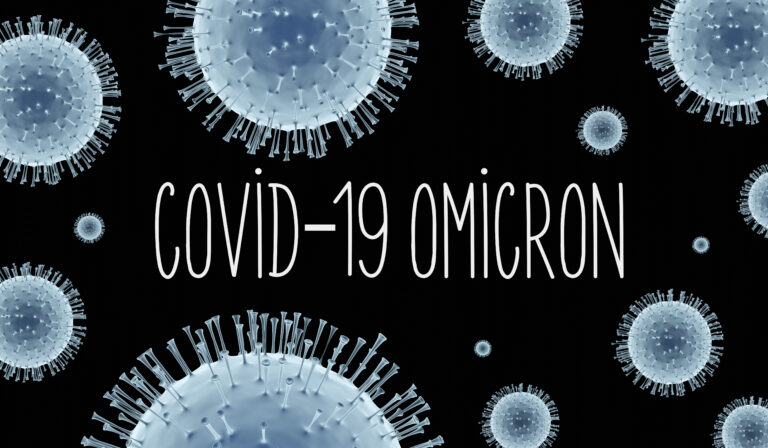Key Points:
- In today’s Recommendations for Industry, we discuss the current and projected status of COVID-19 vaccines. Read more below.
- COVID-19 Was Third Leading Cause of Death in U.S. last year. In 2021, COVID-19 was the third leading cause of death in the U.S., as the Delta and Omicron waves drove the pandemic’s death toll up by nearly a quarter over 2020, according to a provisional report released Friday by CDC. Older people were generally more likely to die from COVID-19 during 2021, with people age 85 and older dying at a rate over 12 times higher than the general population, a trend generally consistent with 2020 figures. As of Thursday, April 21, the cumulative number of COVID-19 deaths in the U.S. was 987,601, according to the CDC.
- FDA expanded the approval of the COVID-19 treatment Veklury (remdesivir) to include pediatric patients 28 days of age and older weighing at least 3 kilograms (about 7 pounds) with positive results of direct SARS-CoV-2 viral testing, who are hospitalized, or not hospitalized and have mild-to-moderate COVID-19 and are at high risk for progression to severe COVID-19, including hospitalization or death. This makes Veklury the first approved COVID-19 treatment for children less than 12 years of age.
- The WHO recommends Pfizer’s Paxlovid for patients with non-severe COVID-19 who are at highest risk for hospitalization. The recommendation is based on new data from several randomized controlled trials published in the BMJ. The agency also issued a conditional recommendation for the use of remdesivir (Veklury) for the same patient population.
- Studies suggest current vaccines boost immune response against Omicron. Despite being developed to fight the original COVID-19 strain, a third dose of mRNA vaccine boosts the immune system substantially to better fight infections caused by the Omicron variant relative to the standard 2-dose primary series, according to two new studies in Nature and JAMA Network Open.
- Extending the time between COVID-19 vaccine doses to over 10 weeks was associated with SARS-CoV-2 antibody levels up to 11 times higher than with an interval of 2 to 4 weeks in never-infected participants, according to a preprint paper to be presented at the upcoming annual congress of the European Society of Clinical Microbiology & Infectious Diseases (ESCMID).
- Moderna released trial results that suggest a version of its vaccine designed to target variants offers better, longer-lasting protection. Researchers combined Moderna’s existing vaccine with one designed to attack the Beta variant, and found it provided a stronger defense against several variants.
- The U.S. is extending a vaccine rule for international travelers at its land borders. International travelers arriving at land ports of entry or ferry terminals in the United States must continue to show proof of full vaccination against the coronavirus. But unlike entering air travelers, land and ferry travelers will still not have to show a recent negative coronavirus test.
Influenza:
- Weekly CDC Flu Report
- Influenza activity varies by region. Activity is highest in the northeast, south-central and mountain regions of the country.
- Clinical Lab – 8.9% positive for influenza this week
- 2.1% of visits to a health care provider were for respiratory illness
- 3,243 patients admitted to hospitals with influenza
- 7.1 % of deaths attributed to pneumonia, influenza, or COVID-19 (above threshold)
- 3 influenza-associated pediatric deaths reported this week for a total of 22 so far this season
Hepatitis:
- CDC issued a nationwide health alert to notify clinicians and public health authorities about a cluster of children identified with hepatitis and adenovirus infection – asking all to be on the lookout for symptoms and to report any suspected cases of hepatitis of unknown origin to their local and state health departments. CDC is working with the Alabama Department of Public Health to investigate a cluster of nine cases of hepatitis of unknown origin in children 1 to 6 years old, all of whom were previously healthy.
- The World Health Organization says at least one death has been reported in connection with a mysterious liver disease outbreak affecting children in Europe and the U.S. The WHO has received reports of at least 169 cases of “acute hepatitis of unknown origin” from a dozen countries. “It is not yet clear if there has been an increase in hepatitis cases, or an increase in awareness of hepatitis cases that occur at the expected rate but go undetected,” WHO said in a statement.
Recommendations for Industry
COVID Vaccines: The Current and Projected Status
FDA is exploring the challenges of revamping COVID vaccines to determine if they can offer even better protection than they do now. The hope is to have a revised version by the fall; however, regulators may need to settle on a new vaccine formula by May or June to meet that goal. This also is an issue because no one knows which variant will dominate in the fall when federal officials consider a new surge highly likely.
There is some chance that another variant will emerge before then, as SARS-CoV-2 had been mutating at several times the rate of the flu virus, for which vaccines are redesigned annually. Below is a list of existing and yet-to-be authorized/approved vaccine platforms. As more vaccines become available, the ideal outcome would include a vaccine that is protective against not only severe illness, but also symptomatic illness (as the mRNA vaccines were against the Delta variant).
The main types of COVID-19 vaccines currently available in the U.S. or being studied include:
- Messenger RNA (mRNA) vaccines (Pfizer-BioNTech, Moderna). Using genetically engineered mRNA to instruct the body’s cells on how to make the S protein found on the surface of the COVID-19 virus. After vaccination, the muscle cells begin making the S protein pieces and displaying them on cell surfaces causing the body to create antibodies. After delivering instructions, the mRNA is immediately broken down and doesn’t affect a person’s own DNA.
- Vector vaccines (Janssen/Johnson & Johnson, AstraZeneca, University of Oxford). Genetic material from the COVID-19 virus is placed in a modified version of a different virus. This “viral vector” delivers genetic material from the COVID-19 virus that gives cells instructions to make copies of the S protein. Once the cells display the S proteins on their surfaces, the immune system creates antibodies and defensive white blood cells. Also, the genetic material doesn’t become part of your DNA.
- Protein subunit vaccines (Novavax developing). Subunit vaccines include only the parts of a virus that best stimulate the immune system with harmless S proteins. Once the immune system recognizes the S proteins, it creates antibodies and defensive white blood cells.
- Live-attenuated nasal spray vaccines(Meissa Vaccines developing). A weakened form of the virus is introduced to the body, in this case through a nasal spray. The vaccine must be strong enough to trigger an adequate immune response but weak enough to never mutate to the point that it might make a person sick. The company expects to have results by this fall, which means it could be available within a year if fast-tracked through regulation. The advantage is that applying the vaccine directly into the nose triggers the body to develop infection-blocking defenses in the sinuses and throat and allow it to start fighting illness much faster than an injected vaccine. The disadvantage is that it is more difficult to get the right amount, every time, past the body’s thicket of natural defenses: nostril hairs, sneezing, and the dense layer of mucus that lines the respiratory tract.
In Case You Missed It:
- In last Thursday’s Recommendations for Industry, we discussed low COVID levels across much of the U.S. with some regional levels of BA.2.12. Read more here.
- DOJ appeals federal ruling on transportation mask mandate. The Justice Department on Wednesday appealed a ruling by a federal judge that struck down the mask mandate for mass transportation, following a recommendation by the CDC. CDC stated that its continuing assessment is that “an order requiring masking in the indoor transportation corridor remains necessary for the public health” and that it would continue to monitor public health conditions to determine if the order remains necessary. “CDC believes this is a lawful order, well within CDC’s legal authority to protect public health.”
- CDC advisers discuss future of COVID-19 booster shots. With Americans aged 50 and older now eligible to get a second booster of COVID-19 vaccine, CDC’s Advisory Committee on Immunization Practices (ACIP) said some groups should consider getting a fourth dose of mRNA vaccine—a second booster—as soon as possible: the immunocompromised, those who live with the immunocompromised, and those at great risk for severe COVID-19. Those who have had COVID-19 within the last 3 months and older, but healthy, adults who want to wait until the fall to get a booster are likely okay to take a wait-and-see approach.
- Study shows COVID-19 infection to offer similar immunity as vaccination. A US study of more than 121,000 participants published in JAMA Network Open found that pre-Omicron symptomatic COVID-19 infection in unvaccinated patients conferred a level of protection against subsequent infections on par with that of mRNA vaccines but longer-lasting. Previous COVID-19 was tied to protection of 85% against reinfection, 88% against hospitalization, and 83% against COVID-19 not requiring hospitalization. This protection remained stable with no waning up to 9 months after the initial illness. The findings, of course, do not suggest that infection is preferred over vaccination.
- Air pollution may aggravate COVID symptoms raising risk of positive test. An observational JAMA Network Open study involving young adults in Sweden suggests that short-term exposure to even relatively low levels of air pollution is tied to a higher risk of later testing positive for COVID-19, likely by worsening symptoms in those already infected. The study authors said that the findings, when taken together with those of previous studies, suggest that short-term exposure to air pollution has a role in aggravating COVID-19 symptoms in those already infected rather than in aiding viral spread.
- CDC Covid Community Map

Food Safety:
- New NARMS report shows rising resistance in Salmonella, Campylobacter. The latest data from the National Antimicrobial Resistance Monitoring Systems (NARMS) 2019 Integrated Summary showed that more than three fourths of the Salmonella isolates (78%) from humans were not resistant to any of the antibiotics tested, and that the overall level of resistance in humans remains relatively unchanged since 2018. However, the report found rising resistance to ciprofloxacin—one of the three antibiotics used to treat severe Salmonella infections. From 2018 to 2019, Salmonella with decreased susceptibility to ciprofloxacin increased from 9% to 11% in humans. NARMS data also show rising fluoroquinolone resistance in Campylobacter isolates. In humans, the proportion of ciprofloxacin-resistant Campylobacter isolates rose from 29% in 2018 to 34% in 2019 for Campylobacter jejuni and from 41% to 45% in C coli. Analysis of E coli isolates found increases in ceftriaxone resistance in sow cecal samples (3% in 2018 to 7% in 2019) and in retail pork (4% to 7%).





